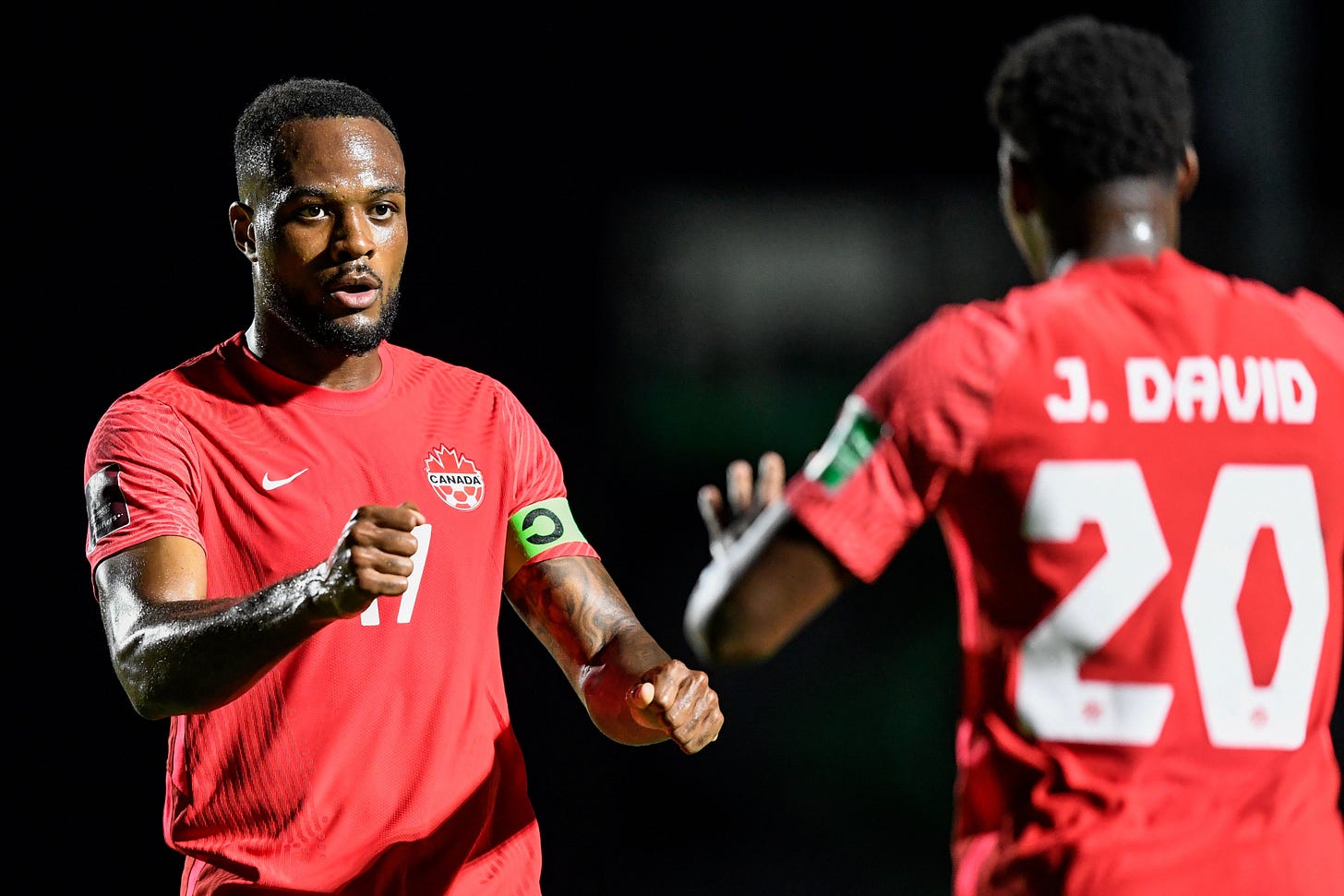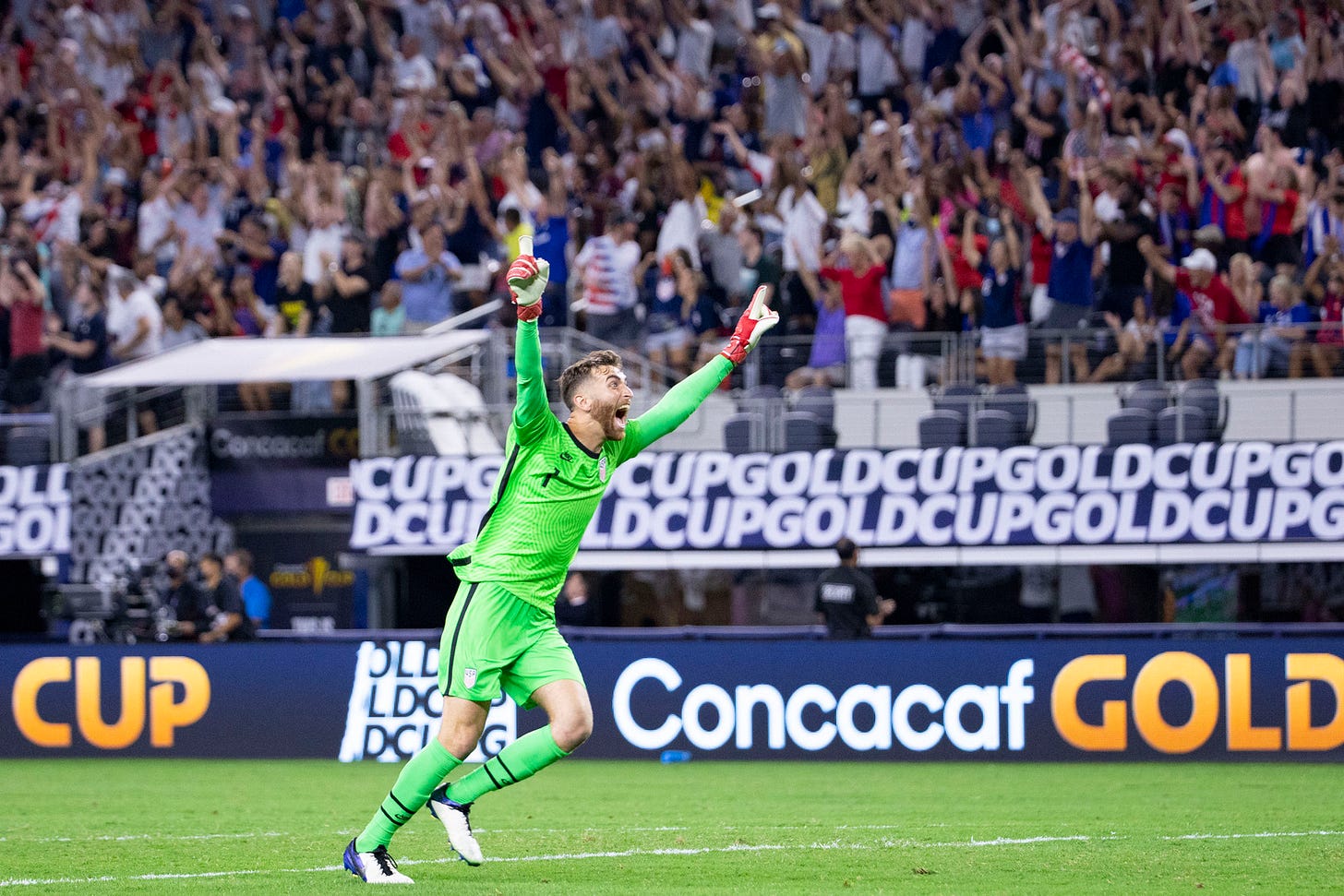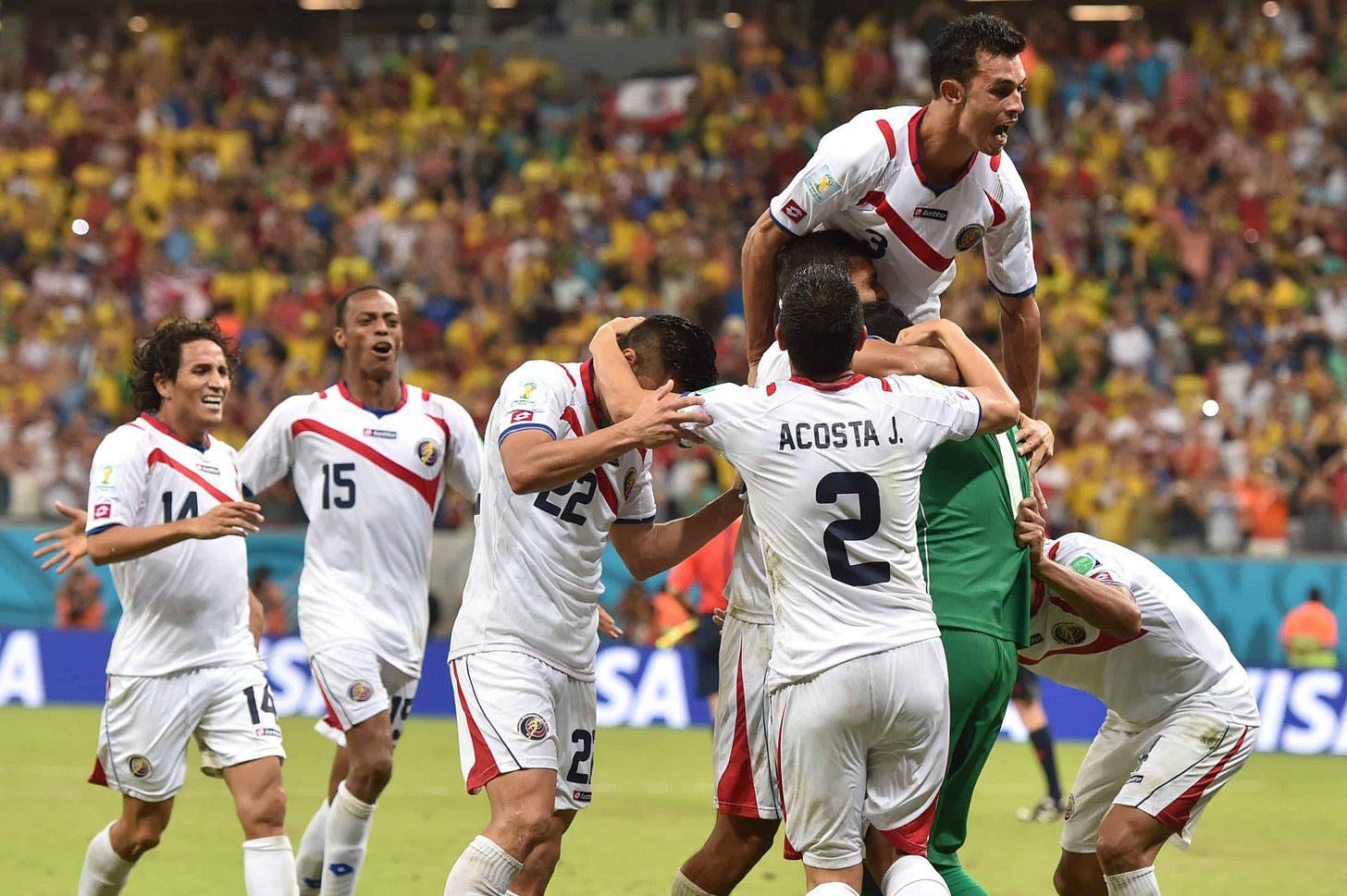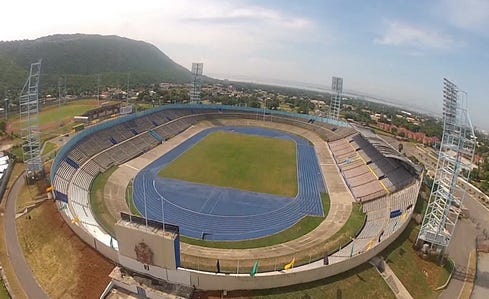🏆 Five questions ahead of the final round of World Cup qualification
It's here! We'll get answers this month!
Welcome to Getting CONCACAFed. Premium subscribers also enjoyed a team-by-team breakdown of all eight squads still competing for one of the region’s World Cup berths. If you’re not already signed up, you can do so here:
It’s here! Around eight hours from now, the referee will blow his whistle and the ball will start rolling on the final round of World Cup qualification in the Concacaf region.
It’s then a mad sprint to March, when WCQ will wrap up with teams having played 14 matches in five FIFA windows to determine who will earn one of three automatic berths to the World Cup and which team’s fate will come down to an intercontinental playoff against a similar team from one of the world’s other regions.
Let’s take a look at five burning questions which I’m looking forward to having answered over the course of these three matches in September.
Is a surprise package lurking in the expanded final round?
This summer in Concacaf was like the sidewalk outside a daycare center: Full of chalk.
There were two finals and they both were contested between Concacaf giants Mexico and the United States.
The biggest surprise of the summer may have involved a team not even in Concacaf, though Qatar’s run to the semifinal wasn’t too much of a jaw-dropper given that they’re the reigning Asian champion.
So, who will be the team to shake things up in World Cup qualification? Or will there be one?
El Salvador and the rollicking style of play instituted by Hugo Perez captured hearts in their run to the Gold Cup quarterfinals. Is La Selecta deep enough to make a run at the top three places?
Jamaica is full of talent, but is unarguably the team hurt most by the current spat between Premier League clubs and FIFA about releasing players for matches played in ‘red list’ countries. Will the Reggae Boyz be able to deploy Leon Bailey, Michail Antonio and their England-based defenders in enough matches to get the points needed to compete for a spot?
And it also depends on how you view Canada. Sure, they haven’t made the World Cup since 1986, but John Herdman is leading a revitalized group. Speaking of…
Is Canada, well, for real?
Canada was the class of the first and second rounds of World Cup qualification, breezing through the opening rounds by winning all six of their matches and outscoring opponents by a combined 31-1 margin (Take a bow, Kane Crichlow of Bermuda, as the lone scorer).
Nobody, certainly not Canada, is saying the teams they got past were the most daunting in the region. The best team Canada faced in the first round was Suriname and they squared off with Haiti in the second. As big as both nations’ future ambitions are, neither were able to advance from the group stage in the Gold Cup, hinting at their present.
The question Canadian journalists are asking is the same one on my mind: Just how good is this Canada squad?
We know John Herdman can call on one of the best players in the region in Alphonso Davies, and that Davies has a strong connection with Jonathan David, one of the best forwards in the region.
The attacking depth goes beyond those players, with Cyle Larin standing out in qualification and Tajon Buchanan enjoying a breakout Gold Cup.
Central midfield also is a position of strength, with Canada able to rely on the veteran experience of Atiba Hutchinson but also seeing the fruits of wooing Stephen Eustáquio from Portugal who was superb both creating scoring chances and protecting the back line at the Gold Cup.
That back line does need protecting. While Canada’s defense is improving, with Scott Kennedy performing well in qualification and Steven Vitória coming off a quality Gold Cup, there’s not much depth there and we’re yet to see them lock down a great attacking side.
So, is Canada going to compete for the top three spots? We should get our answer this month, with Canada enjoying a pair of home matches plus a tough (but short) trip to face North American rival the United States.
The Reds can announce their presence as a contender for Qatar or give strength to the doubters who feel the host slot 2026 is their best current panorama.
Who finishes on top?
I think the most drama will be around the logjam for the third-place spot and the World Cup berth that comes with it, the fourth-place slot granting a playoff place and the abyss in fifth place and beyond.
There’s no guarantee Mexico and the United States finish one-two, but given the talent level both nations have and the positive form they’ve shown in recent Concacaf competitions, it does feel like the historic giants of the region will re-establish their dominance.
If that does happen (and six other countries will have plenty to say about that), who goes to the top? Does it even matter?
It probably shouldn’t. The potential seed is important, but it’s much more significant to get to the World Cup than to get there looking impressive.
Even so, the contests between the U.S. and Mexico always are eagerly awaited, but may be even more anticipated this time around. Each country should do enough to get one of the top three spots, but who will have the bragging rights - and the points for moving up in the FIFA ranking - after the matches in Cincinnati and Mexico City? Will will one team make those direct clashes irrelevant with impressive form or struggles away from home?
Or will we, for the third cycle in a row, watch one of the giants slump to either a nail-biting finish in the playoff or miss the tournament entirely? It’s all in play, but there’s a reason Mexico and the U.S. enter the Octagonal as the favorites and this time it isn’t simply reputation and hubris.
Will Central America continue its run?
Not since 1998 have we seen a World Cup finals played without a Central American team. In 2018, a pair of Central American squads, Costa Rica and Panama, made it to Russia with a third, Honduras, falling short in the playoff.
The North American teams are back in a big way, though, and that means fewer slots for Central America. As we spoke about above, it’s difficult to see Mexico or the U.S. slipping up as badly as the Americans did in 2018.
The North American revival, with Canada also a competitor, plus Jamaica’s effort to bring in their best and brightest, comes at a rough time for Central America.
Both Panama and Costa Rica are in the midst of international soccer’s feared ‘generational change’, and it’s not clear if it’s happening quickly enough for the teams to lock up a World Cup slot.
Costa Rica especially has a strong class of U-23 players. One of those players, forward Manfred Ugalde, will get a trial by fire when he starts tonight against Panama with Joel Campbell and other striker options out injured. He’s the real deal, but how Ugalde and other rising talents are blended with the outgoing generation of Bryan Ruiz, Celso Borges, Kendall Waston and others will be the critical question manager Luis Fernando Suarez has to answer.
Panama’s new stars are slower arriving, though some of their old stars either got out of the way quickly or are still contributing a fair amount.
Honduras and El Salvador simply may not have the depth needed to get into the top three at this point. Honduras has a great goalkeeper in “Buba” Lopez but an aging back line and too few players who are truly transcendental.
In El Salvador, it feels like Hugo Perez’s project may have started too late.
With regulations in place in most countries limiting the crowds, the ace in the hole of the intimidating crowd, plus Honduras acceding to television and not starting games at the hottest time of the day limit some of the ‘intangible’ edge Central American teams can have.
They may prove me wrong and still make the most of it, with at least one team extending the World Cup streak. I think, however, the Gold Cup struggles portend something more serious in the region.
How will the ongoing pandemic affect proceedings?
I’m not a specialist in viruses and even those who are seem to be regularly surprised by how Covid-19 is acting.
My hope, as it has been since this whole thing started, is that it will fade into the background mysteriously and we’ll pack stadiums and cross borders without worry.
Realistically, we know we’ll be living on a planet where Covid-19 is a thing for at least several more months and, likely, years.
So, how will this terrible virus affect our little corner of the world where we enjoy soccer in the region?
Already, we’re seeing just how difficult the UK’s ‘red list’ is making things for Jamaica. The Reggae Boyz recruitment plan brought in West Ham’s all-time leading scorer, Michail Antonio, but he won’t be able to play in two-thirds of their matches this window. Stars like winger Leon Bailey and key cogs such as attacker Bobby Reid and midfielder Daniel Johnson are in the same spot.
There are smaller knock-on effects as well. Mexico wanted to bring in Raul Jimenez, but it looks like that won’t happen. Capacity varies based on country, from the U.S. basically going whole hog in Nashville to Jamaica playing in front of only a few media members and volunteers making the match happen.
And there is, of course, the concerning scenario that the United States’ rising case number leads to bans on the U.S., something that not only would affect the Americans heavily but also would make things much more difficult for players coming home through major transfer points like Miami as they journey toward their matches.
Hopefully this is the window most ‘affected’ by the coronavirus and the regulations that come with it, but recent history shows there may still be more twists and turns.
For now, we can enjoy the matches. Teams largely will have home-field advantages. We’ll see the best of the best in our region. The Hex - errr, the Octagonal - is back. Enjoy the games.










